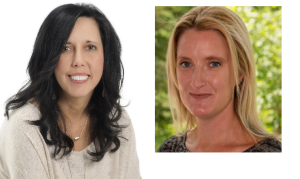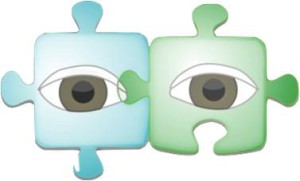“Our research is part of a larger movement toward ensuring that Indigenous people have access to appropriate care from health professionals who understand their history and enough about their culture that they can adapt their approaches and programming to make it more comfortable, and to make it feel more safe for them.” Dr. Kristen Jacklin

Dr. Kristen Jacklin’s research shows that rates of dementia in First Nations and Aboriginal communities in Canada have been steadily increasing for the past 7-10 years. What’s more, onset is now occurring, on average, 10 years younger than in non-Indigenous communities.
Already a clear departure from these communities’ historically lower rates of dementia, the numbers are even more significant when placed within their broader context. Because these communities typically experience delays in diagnosis, the actual number of people living with dementia is likely higher. Failure to diagnose also means that patients and their families are unable to fully benefit from the local care and support services that are available, which, it is worth pointing out, often are not tailored for Indigenous people living with dementia, according to Jacklin.
CCNA Team 20: Indigenous Stream
Attempting to address these gaps in care and build capacity within Indigenous communities in Ontario and Saskatchewan, Drs. Kristen Jacklin and Carrie Bourassa are heading CCNA’s Team 20: Indigenous stream. Fundamental to their current projects is Jacklin’s prior research that established the symptoms of dementia are more widely accepted in the Anishinaabe context. When asked why that is, Jacklin explained:
“A lot of the symptoms, experiences, and disease trajectory are consistent with their worldview, where people enter into this world through an Eastern doorway and travel through the circle of life. As they get closer to the end of life, they also get closer to returning through the Eastern doorway, the child door where their birth occurred. So a lot of people sort of speak matter-of-factly, “well of course they are returning to that baby stage.” If they need more care or if they are acting childish and these sorts of things, that would be expected as they come to that stage. Also, the kind of experiences typically called “hallucinations” (that tend to happen at the later stages of dementia) are explained as visions that naturally occur as an Elder gets closer to the portal of death. These visions are viewed as gifts.”
This is not to romanticize the experience, cautions Jacklin, but rather to emphasize how this worldview can (and does) facilitate a family caregiving model and less stigma in the community about what happens in the final stages of dementia. With that in mind, Jacklin and Bourassa are focusing on opportunities to develop culturally-grounded, strength-based approaches to dementia diagnosis, care, and health education within these communities. This includes supporting dementia care in Primary Health Care (PHC) and Home and Community Care settings for Indigenous people who live in Ontario and Saskatchewan. Their plan is to build upon the International Indigenous Dementia Research Network, established by Jacklin in 2009, which led to partnerships with First Nations and Inuit Health of Health Canada. Essentially, they will continue building research and community capacity in this area, and use their partnerships to facilitate uptake nationally.
“So, the way that the team works – as community-based, participatory researchers – is that the community drives the research agenda,” Jacklin explains.
Two-Eyed Seeing
 To guide the interpretation and application of their research, the team has adopted a “Two-Eyed Seeing” approach. Mi’kmaw Elder, Albert Marshall explains that Two-Eyed Seeing is a gift, whereby a person learns to see from one eye with the strengths of Indigenous knowledge, and from the other eye with the strengths of Western knowledge. This philosophy removes the power imbalance between the two (seemingly competing) knowledge systems, placing Indigenous knowledge on a par with Western.
To guide the interpretation and application of their research, the team has adopted a “Two-Eyed Seeing” approach. Mi’kmaw Elder, Albert Marshall explains that Two-Eyed Seeing is a gift, whereby a person learns to see from one eye with the strengths of Indigenous knowledge, and from the other eye with the strengths of Western knowledge. This philosophy removes the power imbalance between the two (seemingly competing) knowledge systems, placing Indigenous knowledge on a par with Western.
Aligned with this approach, Elders, community partners, and Indigenous academics are integrated into the team’s activities. Project Elders include Betty McKenna (Saskatchewan) and Jerry Otowadjiwan (Ontario), who each assist the team at the community level. An Indigenous advisory group, including Elders, Indigenous knowledge keepers, youth, health care administrators, and other interested community members are also helping to guide the team’s activities, including interpreting findings, establishing advisory committees, and recruiting participants.
In particular, the team is interested to learn what kind of community and cultural strengths can be built into existing programming for people with dementia and their care partners. Whether it is drumming, praying, ceremony, or language use, the team aims to learn why, from the Anishinaabe worldview and knowledge system, these activities “facilitate better quality of life for people with dementia and their care partners, and how this maps onto programming down the road.”
CCNA Year 1
During the first year of collaborating, Jacklin and Bourassa have brought in additional projects to support their work within the CCNA, including:
- Working with the Federation of Saskatchewan Indian Nations to add 7 new questions to the Saskatchewan First Nations Regional Health Survey. This survey will be used by First Nations Health Authorities and Aboriginal political organizations to prioritize funding, programming, and activities.
- Developing culturally relevant health information on dementia and dementia care for the First Nations and Inuit Home and Community Care. Specifically, the team has developed 2 fact sheets for use in Indigenous communities (“What is Dementia? First Nations Perspectives and Cultural Understandings,” and “Signs and Symptoms of Dementia: A First Nations Guide”), and have 2 more that are in progress (“First Nations Guide to What to Expect Following a Diagnosis of Dementia or Alzheimer’s,” and “Healthy Brain Aging: A First Nations Guide to preventing Dementia”).
- Securing funding from the Networks of Centres of Excellence through AGE WELL, in collaboration with Team 20: Rural, led by Dr. Debra Morgan.
Over the next year, the team will continue to work with their community partners and advisory committees through interviews, focus groups, and analyses of health data. For example, by working with Australian researchers – Drs. Leon Flicker, Kate Smith, and Dina LoGuidice, from the University of Western Australia Centre for Health and Ageing – the team is adapting the Kimberly Indigenous Cognitive Assessment (KICA) for use with the Anishinaabe community on Manitoulin Island. To ensure cultural appropriateness, community-based researcher and RN, Karen Pitawanakwant further supports the team by working in tandem with an Anishinaabe language advisory group and local health care providers. In Saskatchewan, Jessica Dieter supports the team by working with the Community Research Advisory Committee, comprised of an Elder, community health representatives, community nurses, and First Nations Health Directors.
“What we’re finding is how important the culture and community context are to how people are experiencing dementia. Within the Canadian Consortium on Neurodegeneration in Aging, it’s very important to consider how cognitive tools should be adapted for vulnerable, disadvantaged, and unique cultures throughout Canada. In this way, tools and programs can be tailored so that they have cognitive benefits, as well as quality of life benefits for Indigenous persons living with dementia.”
Post-publication, Dr. Kristen Jacklin shares: “We have launched a website that captures our CCNA activities as well as leveraged projects concerned with issues of aging and dementia in Indigenous populations: www.I-CAARE.ca (launched in February 2016).”
